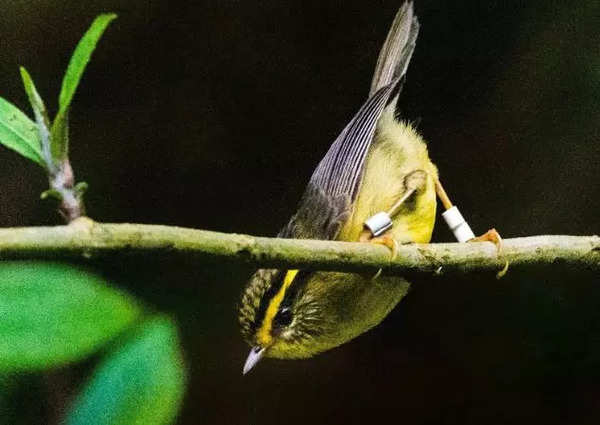Researchers said the support of local communities made this long-term study possible through access to remote field sites.Tropical montane forests are unique ecosystems that can start at about 150-200 metres and reach up to 3,500 metres high up on mountains around the world. They are critical centres of biodiversity, IISc said.
A Chestnut-headed Tesia being ringed (Credit: Global Change Lab, CES)
Researchers found that many species are shifting to higher elevations as temperatures rise, but logged forests are warmer than intact forests. This means birds reach unsuitable habitats sooner as they move uphill. “Logged forests have higher average temperatures and lower humidity than primary forests, thus hastening the transition,” IISc said.
While smaller birds seem to tolerate logged areas better, larger birds do best in primary forest. Logging leads to a loss of large bird species adapted to old-growth forest and an overall decline in diversity.
“Understory insectivores that occupy narrow niches show steep declines in logged areas, likely because of lower insect availability. Large birds, with higher energy needs, are hit hardest by this insect decline,” IISc said.

A Yellow-throated fulvetta with metal and colour rings (Credit: Micah Rai)
Researchers say primary forests across elevation gradients must be protected to give birds room to shift upward as the climate warms. If birds instead encounter logged forest, local extinctions are likely for some species.
“In tropical mountains, each species has a particular niche where it is found. This restriction creates much more diversity in a small space,” explains Ritobroto Chanda, former project associate at the Centre for Ecological Sciences (CES), IISc, and corresponding author of the study published in Global Ecology and Conservation.

Field team (Credit: Global Change Lab, CES)
Pointing out that forest loss and climate change present major threats to these ecosystems, Umesh Srinivasan, assistant professor at CES and another author, said birds — and indeed much of the flora and fauna — of tropical mountain ranges are extremely temperature-sensitive and are responding to global heating rapidly.
“Also, most of the world’s terrestrial biodiversity is concentrated in tropical mountains,” Srinivasan says. However, very few studies have explored the joint influence of these threats.

